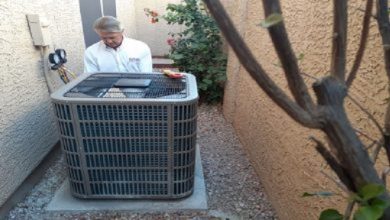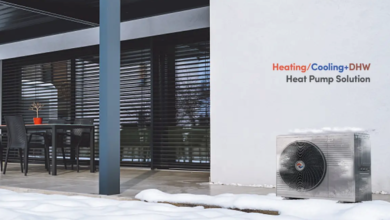Sheet Metal Fasteners Rivets

In today’s world, it’s difficult to imagine anything being built without metal fasteners. Rivets are ubiquitous in both the construction and automotive industries, and they play an essential role in holding things together.
However, rivets come with a cost—they are often expensive to produce, and they can be difficult to install. That’s where sheet metal fasteners come in. Sheet metal fasteners are made from thin sheets of metal that are bent into shape and then welded together.
They have many advantages over rivets, including their ease of production and their low cost. If you want to build something with metal fasteners, or you just need to replace a few rivets on your project, check out our selection of sheet metal fasteners rivets. We’re sure you’ll find what you’re looking for!
What are fasteners and rivets?
Rivets are metal fasteners used to join sheet metal. They have a round head with a hexagonal shaft and are screwed into place using a screwdriver. Rivets come in different sizes and can be made from a variety of metals.

Types of fasteners and rivets
There are many types of fasteners and rivets that can be used when repairing or constructing sheet metal. The most common fasteners are screws, bolts, and nails. Rivets can also be used to join sheets of metal together.
How do fasteners and rivets work?
There are basically two types of fasteners and rivets: needle-and-thread fasteners and machine screws. Fasteners used with needles and threads are inserted through the holes in one piece of metal and pulled tight, while machine screws use a screwdriver to tighten the head against the housing.
Rivets are either self-tapping or driven. Self-tapping rivets use a sharpened point on the end of the rivet that latches onto a hole in one piece of metal, while driven rivets use anvils or hammers to drive their heads into place.
Fastener types and uses
There are a variety of fasteners that can be used in sheet metal construction. Rivets are a common type of fastener, and they come in a variety of sizes and configurations to fit a variety of applications. Fasteners can also be categorized by their use: shear rivets, torsion rivets, and clinching rivets.
Shear rivets are used to join two pieces of metal together. They have a long shank that is inserted into the first piece of metal and then twisted around until it pops out the other side. Shear rivets are most commonly used in aircraft construction because they’re strong and resistant to corrosion.
Torsion rivets are similar to shear rivets except that they use torque instead of twist to hold the two pieces together. Torsion rivets are most commonly used in industrial applications because they’re not as susceptible to corrosion as shear rivets and they hold up better under heavy loads.
Clinching rivets are designed for use in areas where extreme strength is required, such as when connecting two poles together during construction. Clinching rivets have a pointed end that is inserted into the first piece of metal and then hammered until it makes contact with the second piece of metal. The pointed end then forms a tight seal with the second piece, preventing it from moving.
Rivet types and uses
There are many types of rivets, but the most common are sheet metal fasteners rivets. Sheet metal fasteners and rivets are used to join pieces of metal together. They can be made of different materials, and come in various sizes.
Sheet metal fastener rivets are usually made from a strong alloy, like steel or aluminum. They have a head on one end, and a tail on the other. The head is designed to go into the piece of metal you’re joining, while the tail is designed to hold it together.
Sheet metal fastener rivets come in many different shapes and sizes. Most common are round heads and hexagon heads. There are also square heads, V-heads, and butterfly heads.
Different types of sheet metal fastener rivets have different uses. Round-head sheet metal fastener rivets are most commonly used for attaching pieces of wood together. They’re strong enough to hold the wood together, but they don’t damage it too much when they’re put in place.
Hexagon head sheet metal fastener rivets are usually used for attaching panels together in car manufacturing plants. They hold the panels together very well, without damaging them. V-head sheet metal fastener rivets are often used for attaching plates together in aircraft manufacturing plants.
Types of sheet metal fasteners and rivets
Types of sheet metal fasteners and rivets:
- There are many types of sheet metal fasteners and rivets, each with its own benefits. Here are the most common types:
- Bolts: Bolts are the most basic type of fastener, used to attach pieces of sheet metal together. They come in a variety of shapes and sizes and can be made from a variety of materials, including metal, plastic, and even wood.
- Nuts: Nuts are similar to bolts, but they have a screw-like head that makes them easier to install. They’re often used in conjunction with bolts to create an adjustable joint.
- Rivets: Rivets are specially designed bolts that push through the surface of two pieces of sheet metal and hold them together. They’re often used in areas where strength is crucial (like around a window or door), and they’re generally easier to install than bolts or nuts.
Uses for sheet metal fasteners and rivets
One of the most common uses for sheet metal fasteners and rivets is in the construction of metal surfaces. They can be used to connect pieces of metal together or to hold them in place while they are being welded or cut.
Sheet metal rivets are specifically designed for use in steel and other metals. They have a head that is made out of a hard, durable alloy, and a tail that is made from a softer material.
When the two parts are put together, the harder head impact forces the softer tail against the mating surface, creating a secure connection.
Sheet metal screws also have heads and tails, but they are made from plastic. The heads are threaded on one end, and the tails have been flattened so that they can be drilled easily.
The screwdriver is then used to drill through both heads and tails at once, creating a hole through which the bolt can be threaded. More Post Visit.
Conclusion
We hope that our guide has shown you just how versatile and helpful sheet metal fasteners and rivets can be. Whether you are looking to repair a garment or build something new, these tools are an essential part of your toolkit.
We have emphasized the importance of using the right fastener for the job, so make sure to read through our guidelines carefully before making any purchases. And if you need help finding the right fastener for your application, don’t hesitate to contact one of our experts!
iNet Computers is a leading technology company that specializes in providing high-quality laptop chargers for a wide range of laptop models. Our laptop chargers are designed to meet the highest industry standards and are rigorously tested to ensure optimal performance and reliability. With a commitment to customer satisfaction and a focus on innovation, iNet Computers has established itself as a trusted source for laptop chargers that are both affordable and dependable. Whether you need a replacement charger for your current laptop or are looking to upgrade your charging capabilities, iNet Computers has the expertise and resources to meet your needs.





